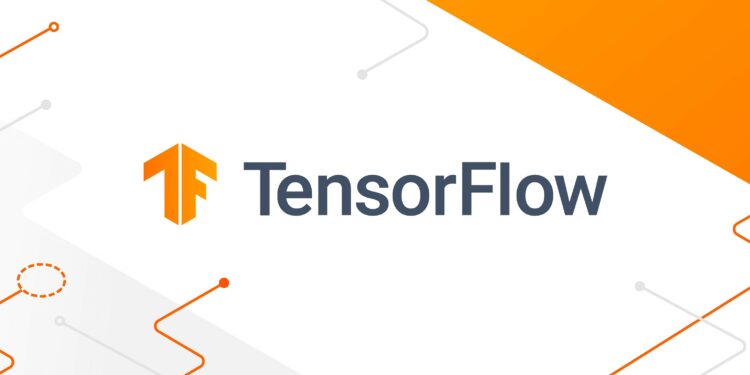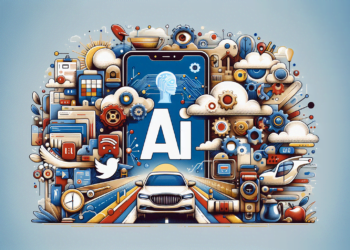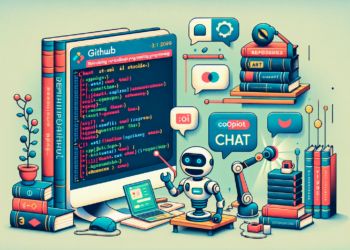TensorFlow is an open-source software library for numerical computation that uses data flow graphs. It was originally developed by researchers and engineers working on the Google Brain team within Google’s AI research organization for conducting research-oriented tasks in machine learning and deep neural networks. However, the system is general enough to be applicable in a wide variety of other domains as well.
TensorFlow enables developers to create data flow graphs to model any type of neural architecture and provides a toolkit for working with these graphs. In a data graph, nodes represent mathematical operations, while edges represent the multi-dimensional data (tensors) that flow between them. This flexible architecture allows the user to deploy computations on one or more CPUs or GPUs in a desktop, server, or mobile device with a single API.
Since its initial release, TensorFlow has been constantly developed and improved, not only by Google but also by numerous external contributors. It has become one of the leading tools used for implementing and deploying machine learning algorithms due to its versatility, scalability, and active community.
Advanced Features of TensorFlow
TensorFlow supports a range of applications with intensive computational requirements. Its advanced features include:
- Eager Execution: Provides a more intuitive and imperative way of defining graphs, making prototypes and debugging easier by operating interactively.
- TensorFlow Extended (TFX): An end-to-end platform designed for deploying production models. It offers components that assist with data validation, pipeline pre-configuration, and model serving.
- TensorFlow Lite: Enables the execution of machine learning models on mobile and edge devices, providing tools for model conversion and performance optimization on these architectures.
- TensorBoard: A visualization tool to analyze the data flow graph and better understand the parameters and metrics involved in training a model.
- Distribution: Provides APIs for the distribution and parallelization of training across multiple CPUs, GPUs, or TPUs, significantly reducing training times for large-scale models.
Algorithms and Recent Advances
The TensorFlow community is constantly exploring new algorithms and improving existing ones. Some of the most recent and notable developments include:
- Generative Adversarial Networks (GANs): TensorFlow provides extensive support for GANs, which have shown impressive results in generating realistic content, such as images and audio.
- Transformers: Transformer-based models like BERT and GPT-3 have revolutionized natural language processing (NLP), and TensorFlow has been pivotal in facilitating their training and deployment.
- AutoML and Transfer Learning: Integration with TensorFlow Hub allows users to take advantage of pre-trained models and adapt them to new contexts, potentially saving a significant amount of time and computational resources.
- Quantum Computing: TensorFlow Quantum is a hybrid quantum-classical machine learning framework for building and training models relevant to quantum computers.
Practical Applications and Case Studies
TensorFlow has not only pushed the boundaries of AI research but has also enabled a variety of practical applications across different industries. Some notable applications include:
- Health and Biomedicine: For example, disease detection from medical images has become more accurate with the use of deep learning models developed with TensorFlow, leading to better diagnoses and treatments for patients.
- Automotive and Autonomous Vehicles: Automotive companies are using TensorFlow to develop driver assistance systems and autonomous vehicles, processing and making decisions in real-time from sensors and cameras.
- Voice Recognition and Virtual Assistants: TensorFlow is being used to enhance voice recognition systems by feeding sophisticated models that can understand and process natural language.
Challenges and Future of Machine Learning with TensorFlow
Despite its popularity and success, TensorFlow continues to face ongoing challenges. Constantly integrating new advancements, managing the complexity and resource demands of increasingly large models, and accessibility for those less experienced in deep learning are areas of continued focus.
In the future, TensorFlow is expected to continue evolving, incorporating emerging techniques such as federated learning to improve data privacy and Explainable AI (XAI) to make models more transparent and interpretable. Continued progress in hardware optimization, particularly with TPUs and other forms of AI acceleration hardware, is also anticipated.
Machine learning is changing the world at an unprecedented pace, and TensorFlow is at the heart of that transformation, providing the tools to move ideas from theory to tangible practice.






















